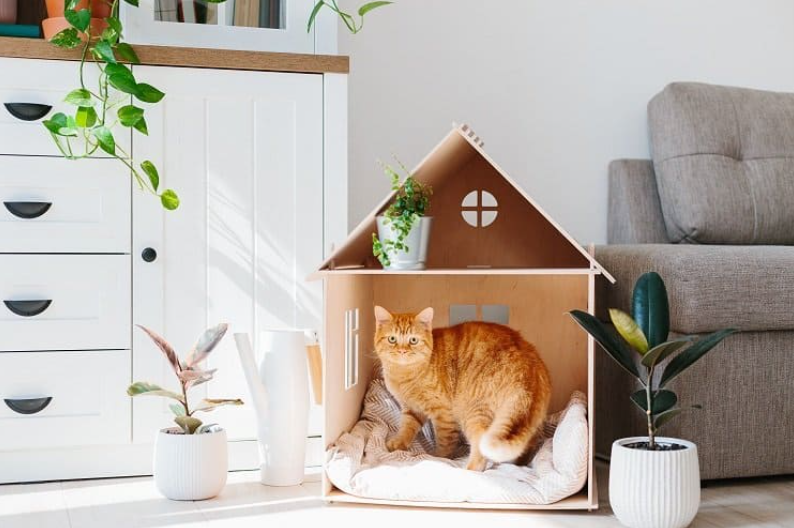Without Sacrificing Cleanliness, Style, or Function
I recently spoke with a woman about my work writing on dogs, cats, and the pet industry. She mentioned she loved animals, especially cats, but didn’t want them in her home.

Her reasons?
She couldn’t stand the sight of carpet-covered cat trees and refused to live in a house that smelled like a litter box.
I totally get it.
That conversation got me thinking about how a little effort and knowledge can help you create a cat-friendly home while maintaining the cleanliness, style, and function you desire.
No one should miss out on the joy of having cats, so here are my top tips for keeping Newtie and Ripley happy in a functional, clean, odor-free, family-friendly home.
How to Cat-Proof Your Home
Safety is paramount when it comes to pets. Here are some ways to cat-proof your home:
- Secure cords on blinds and curtains.
- Store trash, compost, and recycling in a cabinet or with a closed lid.
- Anchor TVs, bookcases, shelves, and furniture that could topple to the wall. Baby proofing options work great for mischievous cats too.
- Make it a habit to close the washer and dryer, cabinets, freezer—anywhere your cat could get stuck.
- Hide electrical cords with covers to keep cats safe and your electronics organized.
- Remove access to swallowable dangers like batteries, cigarette butts, essential oils, cleaning chemicals, bug spray, pest control products, mothballs, medications, plastic bags, tape, string, ribbon, elastic, and hair ties.
- Re-home toxic plants. Here’s a great reference list.
Think of your cat as a smarter, craftier, feistier toddler. Consider how you’d keep a toddler safe in your home, then imagine that toddler had better fine motor skills. Cats can get into serious trouble the fastest, even though dogs can cause the most significant damage quickly.
How to Meet Your Cat’s Needs at Home
Once your home is safe, consider what your cat needs:
- Healthy food: Ensure they have a balanced diet.
- Access to fresh, clean water: Cats love fountains due to the movement. We have two fountains and two still water dishes, and their favorite is this one.
- A clean place to go to the bathroom: More on this later.
- Enrichment and stimulation: This includes positive interactions like petting, play, or grooming.
- An appropriate place to scratch: Provide scratching posts or pads.
- A place to hide: This can be as simple as an Amazon box or as elaborate as a multi-level cat condo.
- Preventative medical care: Regular vet visits are crucial.
For multi-cat households, multiply these resources. For instance, have one litter box per cat, plus one, and one water dish per cat, plus one. Multiple resources throughout your space prevent territoriality and fights. Cats whose needs aren’t met experience stress, leading to health and behavior issues.
A Separate Note on Litter Boxes
Litter boxes shouldn’t be the reason you avoid getting a cat. There are many solutions to address litter box issues, from the type of litter and box you choose to how often you scoop and your cat’s diet.
Litter Box Furniture
We have two cats and three litter boxes. If you have the budget and space, you can conceal your litter box in a piece of furniture. If you don’t want to see your litter boxes (except when scooping), there’s furniture for that. Search “litter box furniture” on Amazon, and you’ll find options for every budget and style.
Even simple cubes work great. We used to have one but needed the space more than the aesthetics. Now we have three of these with mats underneath to collect stray litter. They’re easy to scoop and clean, preventing litter from getting everywhere. We’ve tried many litter mats but ended up using fluffy bath mats from IKEA, which can be tossed in the washer and dryer.
